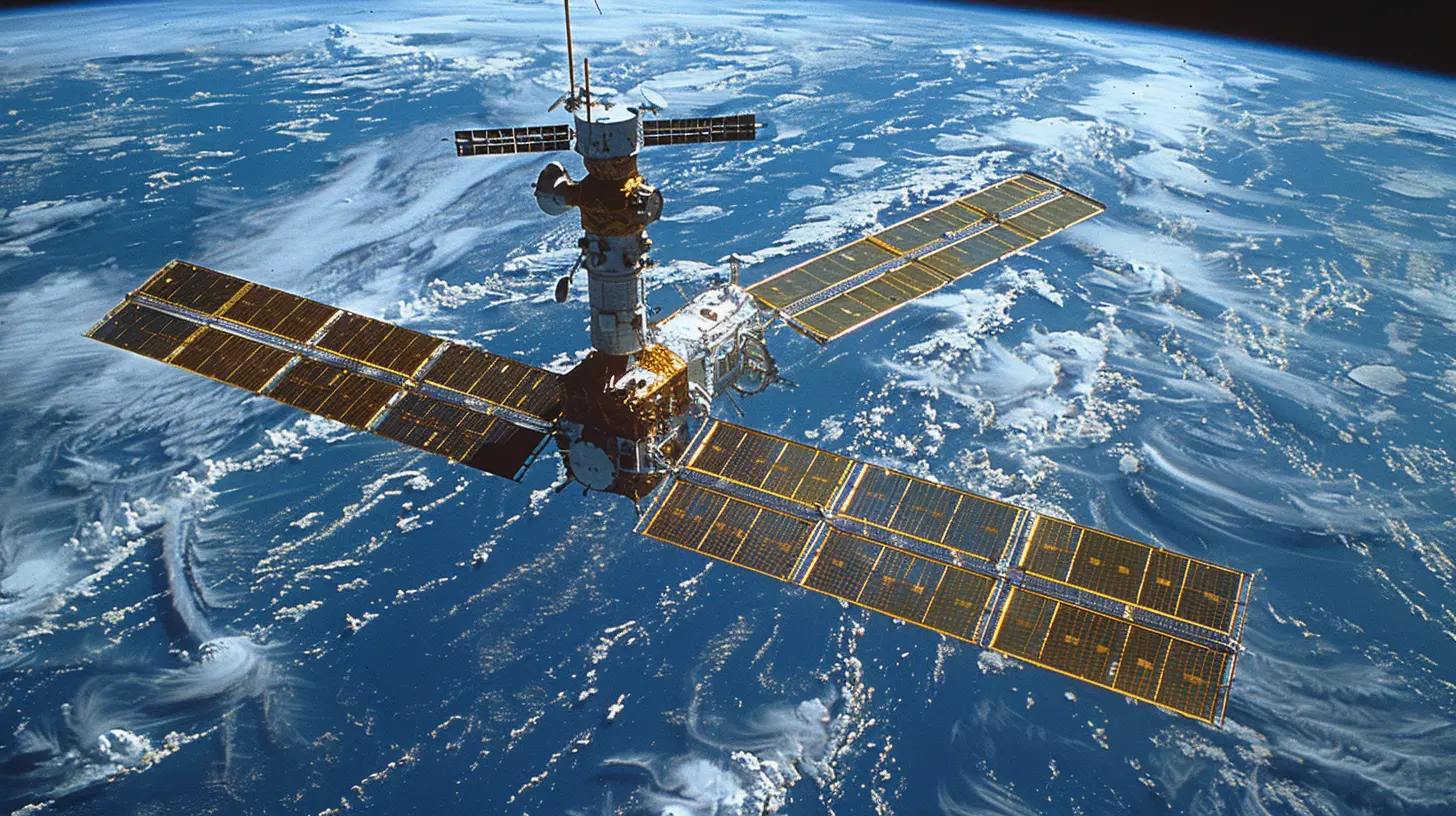Is Satellite Internet the Solution to Global Connectivity?
27 October 2025
In today’s digital age, internet access is more than just a convenience—it's a necessity. Whether it’s for education, business, healthcare, or social connection, being online is crucial. But here’s the problem: nearly 2.6 billion people worldwide still lack internet access. Most of them live in remote areas where traditional broadband infrastructure is costly and unrealistic to implement.
So, could satellite internet be the answer to bridging this global digital divide? Let's dive into what satellite internet is, how it works, and whether it truly holds the key to universal connectivity. 
What is Satellite Internet?
Satellite internet is a type of broadband service that uses satellites in Earth's orbit to provide internet access. Instead of relying on ground-based cables and infrastructure, internet signals are transmitted from ground stations to satellites, which then beam data down to users on Earth.How Does It Work?
Here’s a simple breakdown of how satellite internet operates:1. A user sends a request (like loading a webpage) through a satellite dish.
2. The signal travels to a satellite orbiting Earth.
3. The satellite relays the request to a ground station connected to the internet.
4. The response is then sent back to the satellite and finally to the user.
This whole process happens in milliseconds, though latency (delay) can still be an issue. 
Why is Satellite Internet a Big Deal?
For decades, people in rural and underserved areas have struggled with poor or non-existent internet options. Traditional broadband companies often refuse to build infrastructure in these regions because of high costs and low profit margins.Satellite internet overcomes these barriers by providing service almost anywhere—deserts, mountains, forests, and even in the middle of the ocean.
Key Benefits of Satellite Internet
🔹 Global Coverage: Unlike fiber-optic and cable networks, satellite internet can reach the most remote corners of the world.🔹 Quick Deployment: No need to lay expensive cables; users just need a satellite dish and a modem.
🔹 Disaster Resilience: During hurricanes, earthquakes, or wildfires, satellite internet remains operational when traditional infrastructure fails.
🔹 Bridging the Digital Divide: It can bring education, telemedicine, and economic opportunities to underdeveloped regions. 
The Challenges of Satellite Internet
While satellite internet sounds like a game-changer, it’s not without its downsides.1. High Costs
Let’s be honest—satellite internet isn’t cheap. Unlike traditional broadband services, satellite internet often comes with higher installation and service fees. Some providers, like Starlink, charge hundreds of dollars for equipment and monthly fees upwards of $100.2. Latency Issues
One major drawback is latency—the delay in data transmission. Traditional fiber-optic broadband has latencies of less than 20 milliseconds, whereas satellite internet can have latencies over 600 milliseconds (especially for older satellite technology).This creates problems for activities like:
- Online gaming 🎮
- Video calls 📹
- Real-time trading 💹
3. Weather Disruptions
Bad weather is the enemy of satellite signals. Heavy rain, snow, or even thick clouds can interfere with connectivity, leading to slow speeds or complete outages.4. Limited Bandwidth & Data Caps
Most satellite internet providers have data limits, meaning users can’t stream endless Netflix shows or download large files without hitting a cap. Once a user exceeds their data allotment, speeds drastically slow down.
Starlink and the New Era of Satellite Internet
For years, satellite internet was synonymous with slow speeds and high prices. But now, companies like SpaceX’s Starlink, Amazon’s Project Kuiper, and OneWeb are shaking things up.What Makes Starlink Different?
Starlink, arguably the most well-known satellite internet provider today, is changing the game by using thousands of low Earth orbit (LEO) satellites instead of older geostationary satellites.Here’s why this matters:
✅ LEO satellites are closer to Earth, reducing latency to as low as 20-40 milliseconds.
✅ Higher speeds (often exceeding 100 Mbps) make it viable for streaming, gaming, and remote work.
✅ Lower launch costs (thanks to SpaceX’s reusable rockets) could make Starlink cheaper over time.
But even Starlink has its challenges—equipment costs are still high, and some users have reported inconsistent service as the network continues to expand.
The Future of Satellite Internet
With rapid advancements in technology, satellite internet is becoming more accessible and reliable. But will it completely replace traditional broadband? Probably not—at least not anytime soon.Instead, satellite internet will likely serve as a critical supplement to existing infrastructure, expanding access to areas where fiber and cable aren’t feasible.
Potential Developments in the Next Decade
🚀 More Satellites, Better Coverage: Companies like Starlink plan to launch tens of thousands of satellites, improving global availability.📡 Lower Costs: As technology advances, we could see cheaper equipment and service plans.
⚡ Faster Speeds: With continued innovation, gigabit-level satellite internet may become a reality.
🌍 Government & Private Partnerships: Many governments and tech giants are investing in satellite internet to ensure universal access.
Is Satellite Internet the Solution to Global Connectivity?
Yes and no. Satellite internet has the potential to bring internet access to every corner of the globe, but it’s not a perfect solution.💡 For remote areas, it’s a game-changer—offering connectivity where none existed before.
💡 For urban areas, traditional fiber and 5G still provide better speeds and lower costs.
Ultimately, satellite internet is one piece of the puzzle in achieving global connectivity. While it may not replace conventional broadband, it plays a crucial role in ensuring that no one—no matter how remote—is left behind in the digital revolution.
Final Thoughts
The future of global connectivity isn't about one single technology winning the race—it’s about multiple solutions working together. Satellite internet is filling a critical gap, helping to bridge the digital divide and bringing millions online.As technology improves and costs decrease, we may one day live in a world where affordable, high-speed internet is truly available to everyone—no matter where they are. Until then, satellite internet remains an exciting and essential part of the journey toward universal connectivity.
all images in this post were generated using AI tools
Category:
Tech NewsAuthor:

Ugo Coleman
Discussion
rate this article
1 comments
Nymira McGonagle
Great article! It's exciting to see how satellite internet could bridge the digital divide and connect communities worldwide. Looking forward to more innovations in global connectivity!
October 28, 2025 at 5:53 AM

Ugo Coleman
Thank you! I'm glad you found the article inspiring. The potential of satellite internet to connect underserved communities is indeed exciting! Stay tuned for more developments!


